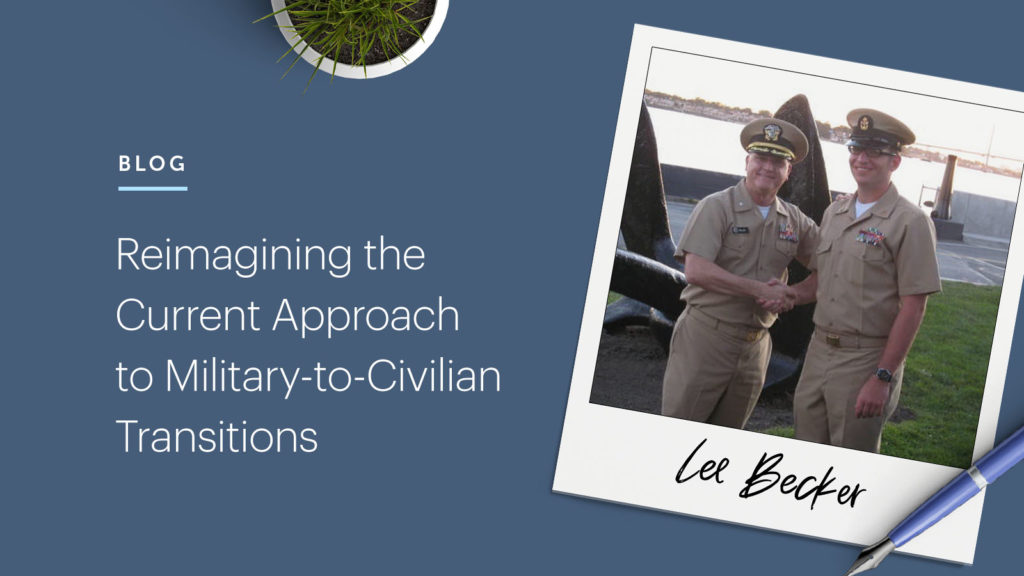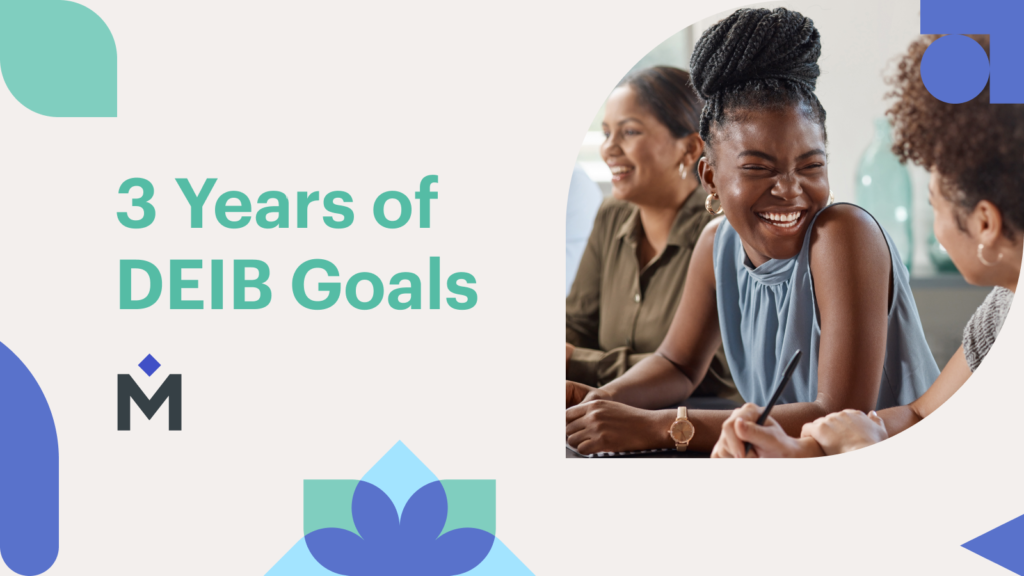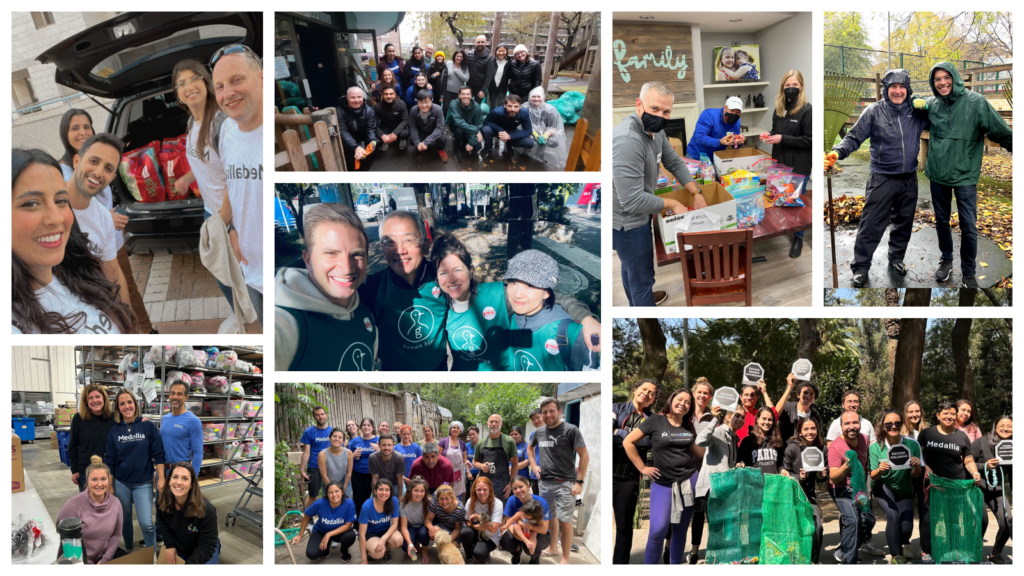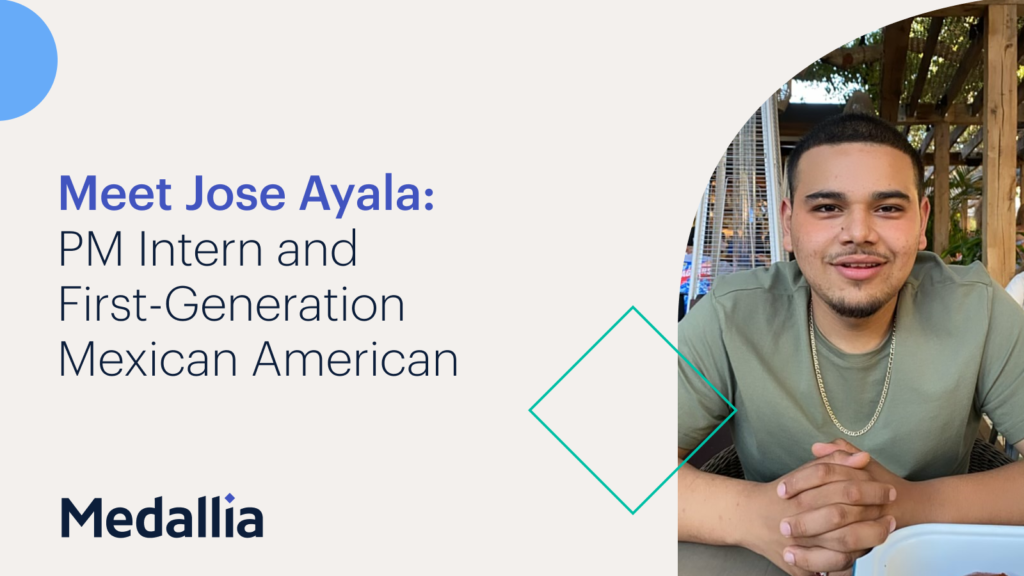Transitioning from military service to civilian life is a significant life change, and all military members will eventually experience it. This process involves a major shift in identity — one that we don’t talk enough about, from having a strong sense of purpose and community in the military to finding a similar sense of purpose and community as a civilian.
According to a Los Angeles County Veterans Study, more than two-thirds of Veterans have reported that they struggle to adjust to civilian life: 80% leave the military without employment, and 40% leave without shelter or housing. The most commonly reported challenge is feeling as if they don’t belong in society.
So where do we come in? As a global leader in customer and employee experience, with a core value of cultivating a culture where everyone feels a sense of belonging, this is at the intersection of our values and commitments. Medallia’s commitment is to help improve the Veteran experience internally and externally.
Medallia supports Veterans externally in many ways. Recently, Medallia partnered with The Women Veterans Interactive Foundation to support women Veterans transitioning out of military service by conducting research and collecting data. The partnership was announced on Veterans Day 2021 with the goal to help turn these Veterans’ stories into action, in addition to helping to shape policy and programs that combat issues facing women Veterans, including homelessness, unemployment, and suicide. Internally, the Vets@Medallia employee resource group recently completed a customer experience career webinar to help share with other Veterans the opportunities to work in the field.
We wanted to listen, support, and learn more, so we sat down with our very own Lee Becker, Vice President, Solutions Principal for the global public sector and regulated industries. Lee shared his personal experiences and thoughts on the imperative to develop a more proactive and intentional approach to supporting transitioning service members and their families.

Q&A with Lee Becker
Thank you for chatting with us, Lee! We’d love to learn a little bit more about you. On a personal level, what are some challenges you faced during the military transition to civilian life?
During my initial transition from the military in 2003, I received no support from the military in the transition, and as a result experienced homelessness for three months, living out of a car while attending school. I am very lucky and blessed for being able to overcome that and want to ensure that no other Veteran experiences this hardship.
Given your experiences, what is the most fundamental issue when dealing with the current military transition to civilian life?
The military does a great job training the civilian to become a military service member with a very immersive experience (to include boot camp and additional schooling). Unfortunately, in the transition process from military to civilian, we are not seeing the same level of holistic capabilities to support a seamless transition back to the civilian world.
The current military transition process does not adequately address the needs of individual military service members to transition back to civilian life. Many improvements have been made to the process over the past 10 years, but there are still experiential gaps. For example, a great program developed by the military called SkillBridge helps prepare military personnel transitioning to work in industry through an internship at various companies. The issue is that there are inequities in the process, where although the program is “available”, we are seeing inconsistencies in the accessibility of this program by those who need it most. For instance, an enlisted military service member who served four years may not get the same opportunity to access this program as a more senior military service member.
This issue was recently highlighted in a Department of Defense Inspector General report, which shows a deep systematic failure in the military transition process that has placed our transitioning service members at grave risk. Military service members are 3x at risk for suicide following separation than active duty. Yet, most service members are not fully prepared or career-ready to transition and, based on their personal self-assessment and individual transition plans, will require maximum support to address post-transition goals.
We need to address the military-to-civilian transition just like we systematically orchestrate the transition from a civilian to the military.
You’ve mentioned how the emphasis on training to become a Veteran pales in comparison to prepare one to become a military service member. What are your thoughts on how the DoD can reimagine this?
We have seen many efforts to help address the transition process by changing within the current transition framework. But to ensure the greatest impact, we need to reimagine the transition process and think about ways to create a civilian boot camp of sorts — a seamless transition experience, just like we have in place at military boot camps. We need an experiential approach to transition the military service member and family back to civilian life.
The Boulder Crest program is a great non-profit that has implemented this concept, and the results are amazing. What if we applied this type of proof of concept across all transitioning military? We must reimagine the military transition process, given that we have seen the numbers of suicide be 10x higher than the number of service members who died during the wars in Iraq and Afghanistan.
The military needs to implement a way to listen harder in real time to every transitioning service member and their family along the journey, and proactively address any transition challenges.

How can we shift the culture around military-to-civilian transitions and develop a more proactive and intentional approach to supporting Veterans throughout this critical process?
I am very pleased to see the work by the VA (United States Department of Veterans Affairs), where they are taking an intentional approach in proactively understanding the Veterans experience and listening in real time to address their needs. The VA is creating a new model where any transitioning service member is automatically considered a “member” at VA. With this new approach, a Veteran will no longer have to opt in to utilize their services. To make this a reality, it will require the Army, Navy, Marine Corps, Air Force, Coast Guard, and Space Force to enable this approach. With continued efforts by the VA in improving the benefits experience, we should see great impact from this program for all Veterans and their families.
Can you elaborate more on how we can help meet Veterans where they are?
Meeting Veterans where they are requires a whole community approach. Every federal, state and local agency, nonprofit, and business has an opportunity to think about how their services align with the Veterans journey, and how they can create opportunities to proactively address these challenges proactively. The Veterans Journey Map is an excellent tool for organizations to identify opportunities to support transitioning service members, Veterans, families, caregivers, and survivors.
How did you get into your current career? What steps did you take?
The military provided me with many opportunities to grow. I am thankful for my experience as a Navy Corpsman caring for Sailors, Marines, and their families. I received superior training and experience in various levels in the healthcare system — from emergency/trauma medicine, inpatient, outpatient, and the full realm of healthcare administration, operations, and logistics. I learned all about the importance of patient-centered care, which was the precursor to patient experience and customer experience in the healthcare system.
The military created an environment where I was forged as a leader and allowed to be part of incredible efforts to support our returning wounded warriors and families. I also helped establish the Marine Corps Wounded Warrior Regiment, and supported the development of all the military services wounded warrior programs.
That being said, the military did not provide me with the necessary licenses needed to work in civilian healthcare. I needed to create my own destiny once I transitioned to civilian life. While working full time, I had the opportunity to complete my undergraduate and graduate degrees thanks to the new VA GI Bill program.
Along with receiving my education, and various other roles, I decided to join the VA to continue serving by helping my fellow Veterans in improving the claims and appeals experience, patient experience, and with a dedicated team focused on improving the overall Veterans experience. As a result, we developed the Veterans Experience Office, which formally established the customer experience capabilities at the VA and is the model for customer experience across government.
This inspired me to join Medallia to support public sector agencies, healthcare systems, and other regulated industry teams to create seamless experiences for all those that they serve.
I am thankful to have been able to channel the struggles from my military transition in finding my next “why.” I couldn’t do this alone. Thankful for my faith, family, friends, colleagues, leaders, and mentors along the way that have supported me along my journey. I am also grateful to the VA for being there for me when I needed them most. The VA saved my life in 2003 when the military transition failed me, and later on the VA was a critical step to help me find my next “why.”
Thank you for having such an important conversation with us, Lee. Can you leave us with your best advice for transitioning Veterans who struggle to find work?
I implore every transitioning service member to insist on their military chain of command to prioritize their transition process, and to be allowed into programs like the military SkillBridge program. If they are not accepted into the program, they should raise their concern to higher headquarters. Or please reach out to me, I would be happy to help.
You’re not alone. Reach out to the VA. Utilize the VA Welcome Kit to help identify the resources that are aligned to your Veterans journey. I would highlight the imperative for all transitioning service members to utilize the VA vocational rehab program career counseling capabilities listed in the VA Welcome Kit.
Be proactive in your approach. Learn from those that transitioned before you. Your civilian career is a journey — look for companies, agencies, and nonprofits where their mission is aligned to your “why.” Seek jobs that will allow you to grow and learn so that you can provide the best impact and outcome to your community, your country, and the world.
Medallia is growing and dedicated to “hiring the whole person.” Join the #MedalliaLife by heading to our careers page and applying today! Follow Medallia Life on Instagram & Twitter.









